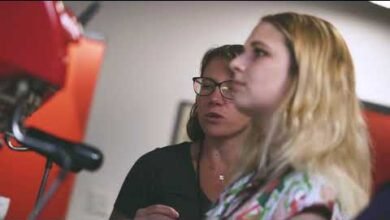Far From Minor Injuries, Concussions Can Affect Communication, Learning, and More in Children of All Ages
Although 70% of U.S. adults have heard of a concussion, 81% are not aware that a concussion is a traumatic brain injury, according to Concussion Awareness NOW (CAN)—a coalition of organizations, including ASHA, that seeks to change the “walk it off” culture that contributes to 50% of all concussions being ignored.
Concussions affect people of all ages, but children are particularly vulnerable to long-term effects because their brains are still developing.
“Millions of children get concussions every year, but these shouldn’t be compared to scraped knees or twisted ankles,” said ASHA 2025 President Bernadette Mayfield-Clarke, PhD, CCC-SLP. “Although many children do recover quickly, others will have long-term difficulties with communicating, learning, and daily functioning.”
Some symptoms may not appear until weeks, months, or even years later—which can cause caregivers to overlook the possibility that the symptoms stem from a concussion.
“Caregivers should consider a concussion to be a permanent part of a child’s medical and educational history, particularly when challenges arise that can’t be attributed to other conditions or factors,” Mayfield-Clarke notes.
In the Classroom
National Concussion Awareness Day coincides with the busy back-to-school season, a time when children experience a significant increase in cognitive demands.
In school, concussions can present as problems with concentration, memory, or attention; trouble finding the right words or participating in conversations; difficulties with organizing tasks or shifting between tasks; and increased sensitivity to noise, among other effects.
If a child has a known concussion, families are encouraged to notify their school. The Centers for Disease Control and Prevention (CDC) offers resources for families, including a letter to send to the school and information on concussion management plans. These plans are based on the child’s symptoms and guidance from their health care provider. Many accommodations and strategies exist that can help children succeed while they recover.
Key Facts About Concussions
Numerous myths about concussions persist. These misconceptions can stand in the way of timely, effective treatment. Below are some important facts about concussions.
- FACT: You can get a concussion without a direct hit to the head. A jolt to the body—for example, from a car accident—can lead to a concussion.
Key Steps That Families Can Take
ASHA recommends the following advice to parents and caregivers:
1. Prioritize protection. Children should wear helmets when riding bikes and scooters; while playing contact sports such as football or lacrosse; and while skateboarding, snowboarding, and skiing. Children should always wear seatbelts in moving vehicles. Families should childproof their homes to prevent children from climbing and furniture from tipping over.
2. Get every head injury checked. It’s nearly impossible to predict the impact of a concussion without a medical check, which is why anyone who experiences a jolt or bump to the head should seek help. There are many places to get evaluated—from emergency rooms to concussion care centers to primary care doctors.
3. Realize that symptoms can vary. Every concussion is different. The list of possible symptoms is extremely extensive, and these symptoms can vary based on the child’s age.
4. Dedicate enough time to recovery. Returning too soon to sports or academics can worsen symptoms. Recovery doesn’t usually mean eliminating all activities completely, but it may mean easing back into schoolwork, for example.
5. Seek help from health care professionals. If symptoms linger, talk to a doctor about further evaluation and treatment from a specialist. Audiologists can help with hearing and balance issues that may occur after a concussion. Speech-language pathologists can help with communication, learning, and social difficulties. You may need to contact other professionals for help, as well, depending on the nature of a child’s symptoms.
For more information about concussions, visit Concussion Awareness Now.
About the American Speech-Language-Hearing Association (ASHA)
ASHA is the national professional, scientific, and credentialing association for 241,000 members, certificate holders, and affiliates who are audiologists; speech-language pathologists; speech, language, and hearing scientists; audiology and speech-language pathology assistants; and students. Audiologists specialize in preventing and assessing hearing and balance disorders as well as providing audiologic treatment, including hearing aids. Speech-language pathologists (SLPs) identify, assess, and treat speech, language, and swallowing disorders. http://www.asha.org
Media Contact
Francine Pierson, ASHA, 301-296-8715, [email protected], https://www.asha.org
SOURCE ASHA

Source link



